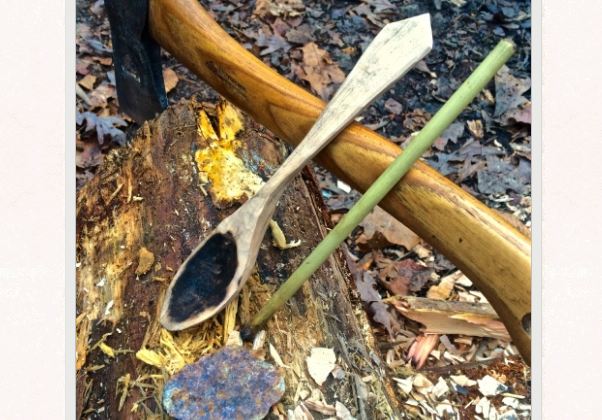Bamboo is one of the few multi-purpose materials that can be used in virtually any survival situation.
As long as you can find some, you can use it for dozens of applications. Check out some of the clever uses for this material below:
Hunting
• Arrow Shafts ~ A preferred material for Southeastern Native American tribes.
• Atlatl and Darts ~ Cane was used to make darts for these spear throwing tool. Jones describes in Postcards from the Past (pg. 193) and has made spear-throwers entirely from cane.
• Knife ~ Some tribes made fire-hardened knives from cane capable of skinning game. I have a deep cut on my knuckle which is finally healing from a brush with sharp river cane.
• Blow Gun ~ Nodes (joints) were removed to form a long, hollow tube of cane to blow darts from. These were effective in hunting small game animals and birds.
Fishing• Fish Trap ~ The Cherokee used a funnel style trap at an opening of rock dams and weirs in steams to catch fish.
Cane fish trap in progress
• Split Cane Gig ~ Easy to carve and fire-harden harpoon style gigs for fish or other aquatic species.
• Floats ~ A small clum between both nodes can be used for a line float on a cane pole.
• Jug Fishing ~ Bundle several lengths of cane together with a line and hook attached for passive jug fishing.
Containers
• Baskets ~ Cane was split into splints and woven into baskets for food gathering and storage, clothing storage, ceremonial uses, and day-to-day containers. Natural pigment were used to dye and decorate.
• Mats ~ Woven mats were used for covering walls, floors, bedding, burial, and seating.
• Cane Vial ~ The hollow portion of a clum makes a great container for storing liquid, salt, pepper, medicine, needles, etc.
Wildlife
Canebrakes are an ecosystem unto themselves.
A small canebrake
• At least 23 mammal species, 16 bird species, four reptile species and seven invertebrates that occur within canebrakes (Platt et al. 2001).
• Swainson’s warbler builds it’s nests in dense canebrakes.
• Canebrake Rattlesnake (endangered) live and hunt in canebrakes.
• Whitetail deer eat young shoots in the spring.
Farming• Food ~ Attractive to many grazing bovine, young cane was the highest yielding native pasture in the Southeast. Indians managed large canebrakes by controlled burning every 7 to 10 years. For humans, boil and eat young shoots in early spring and summer.
• Riparian Buffer ~ Canebrakes improve water quality by filtering ground water nitrates/phosphates, trapping sediment, and stabilizing erosion.
• Tomato Stakes ~ If river cane isn’t abundant in your area, use bamboo instead.
Bamboo or cane is a great garden companion
Construction
• Shelter ~ Cane and other flexible saplings were used in wattle-and-daub walled houses.
• Watercraft ~ Bundles of hollow river cane lashed together to form pontoons.
• Pipes ~ Stem for smoke pipes.
• Blow Tube ~ Perfect for making burn and scrap containers and spoons.
• Furniture ~ Chairs, beds, tables, etc.
Crafts
• Paint Brush ~ A short, hollow portion of river cane will accept animal hair or plant fibers to form a brush.
• Jewelry ~ Necklaces, bracelets, and pendants can be made from cane.
• Burnishing Tool ~ Used to burnish leather edges or other craft items.
If you find yourself in a survival situation, you can do a lot worse if all you have to work with is a stand of bamboo.
Bamboo is a versatile, durable plant that is easy to work with and has literally dozens of applications that can make survival life easier and in some cases, could be a life saver.
To learn more about bamboo and how to use it, please visit Survival Sherpa.
Featured Image via Survival Sherpa/Instinct Survival

Ihiya is what its called in Tsalagi. Canebrakes used to be miles thick before european contact..now its less than 1%. Very useful but should be planted 10x more than harvested.